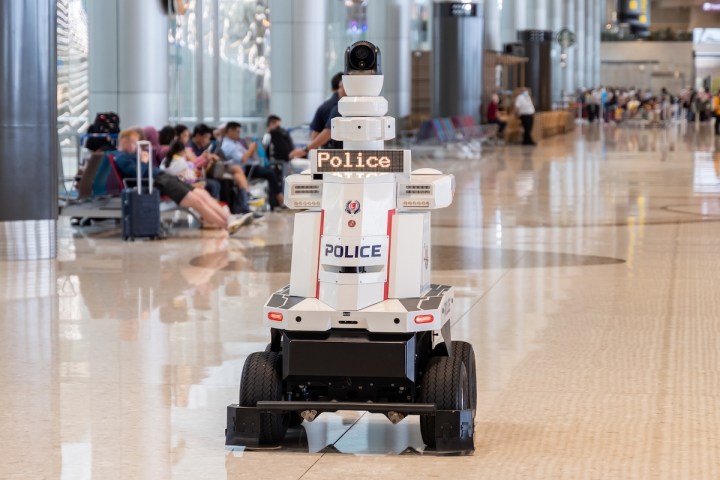
Singapore’s main international airport is going ahead with the permanent deployment of police robots following a successful trial of the technology.
The wheel-based machines are equipped with cameras, sensors, a display panel, and a siren, according to local news outlet Straits Times.
They can roam through the airport lounges autonomously and built-in speakers allow a remote police officer to communicate directly with those close by. Incorporated microphones also allows travelers to easily get in touch with a human officer if assistance is required.
The robots are 5 foot, 7 inches (170 centimeters) tall but can reach much higher via an extendable mast with a camera at the top, providing the police operations room with a clear view of the robot’s immediate surroundings.
The Singapore Police Force recently confirmed that two of the robots have been put to work at Changi Airport Terminal 4, while there are also plans to deploy the contraptions in other parts of the city-state.
Commenting on the new robotic recruits, Superintendent Lim Ke Wei of the Airport Police Division said: “These patrol robots operate autonomously alongside our officers, providing additional eyes and support on the ground. The integration of robotics enhances the operational efficiency and capabilities of our frontline officers, enabling them to be more effective in their duties.”
Police departments around the world have been experimenting with robotic technology to see if it can help with the daily duties of human officers.
The New York Police Department, for example, recently rolled out several robots on the streets of the city. It’s actually the second attempt to deploy the autonomous police robots after a public outcry over costs and privacy halted a similar effort two years ago.


